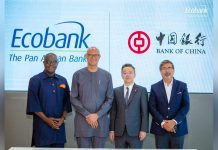Africa-Press – Gambia. With a keen interest in the government’s determination to create 150,000 jobs in five years, the agricultural sector is one of the biggest sectors identified as the fastest and has the biggest opportunity for job creation in The Gambia.
In an exclusive interview with Abdoulie M. Touray (AKA Baks Touray), the Chairman of the National Employment Technical Committee (NETC) affirmed that the 150,000 jobs to create in five years is realistic while disclosing that “the biggest opportunity we have is in agriculture, not subsistence agriculture but by seeing agriculture as a business.”
Seeing agriculture as a business, he explained, “It has three dimensions that include mechanizing, irrigation system and value chain approach. This is by looking at production and productivity, processing, preservation storage, and marketing, that’s what it requires.”
Meanwhile, he said the country is blessed, by and large, with River Gambia and there is a need to change the dynamic by not depending only on rain for continuous productivity noting according to information “The Gambia has over 440,000 hectares of arable land that is not under cultivation. And according to statistics provides 1 hectare of arable agricultural land can employ 10 people if it is not mechanizing and if it is mechanizing it will employ 5 people. Arithmetically, taking 10% of 440,000 hectares will give 4,000 hectares and multiply by 5 jobs if it is irrigated automatically we are talking about 20,000 jobs and so on.”
Defending the possibility of 150,000 jobs creation further, NETC Chairman continued that with the present government economic tour, he cited G Farm owned by Muhammed Sanyang, a visible example, saying the farm started with 500 chickens and takes poultry farm as a business, Presently, “he has 120,000 chickens, producing 100,000 eggs every month and now diversified into cattle production while everything doing in the farm is fully automated. Can you imagine the impact if this can be replicated in different districts or regions across the country?” he added while citing more examples from Raddles Farm which produces varieties of items, Mauro Farm is into rice cultivation with quality rice that is far superior to the imported ones, Swami India with its abundant banana plantation farm.
The Gambia has a lot of possibilities and opportunities “It is just a matter of creating the environment and for people to take the advantage especially people that are not working,” he lamented.
On finance, he said the missing link in the country that entrepreneurs always complain about is access to finance.
“In The Gambia, there are several banks available but they are all commercial banks. To accelerate development, we need investment banks, development banks, specialized banks, leasing companies, capital banks, and so on. Though finance banking is coming up but still at the micro level. With finance, investment, and development banks, business people will be able to access finance while the interest rate will also go down,” he explained how development could be accelerated in the country.
However, he dilated on the working age population, labour force status of the working population, labour force participation rate (LFPR), and unemployment rate.
The working age population, he explained according to the GBOS “defined as the population aged 15 years and older, and is composed of 48.2% of males and 51.8% of females who mainly live in urban areas (61.5%). The labour force status of the working-age population, on average, four in ten persons of working age are engaged in the labour market (43.6%), by either working or being unemployed. The population outside the labour force (56.4%), is composed of persons only studying (23.4%), subsistence farmers (9.4%), or persons in other situations such as elderly people, disabled, discouraged job seekers (23.6%).”
As typically observed, he noted as per GBOS survey, “The labour force participation rate (LFPR) is higher for males (47.9%) than for females (39.6%) in each age category. The profile by age group shows that young people enter the labour market later due to longer education. The participation reaches a maximum in prime ages (35-59 years) around 60 percent and then declines at the age of retirement. In terms of place of residence, the LFRP is much higher in urban compared to rural areas (62.6% and 37.4% respectively).” The survey according to him, indicated that the “unemployment rate stands at 7.6%.”
For More News And Analysis About Gambia Follow Africa-Press






